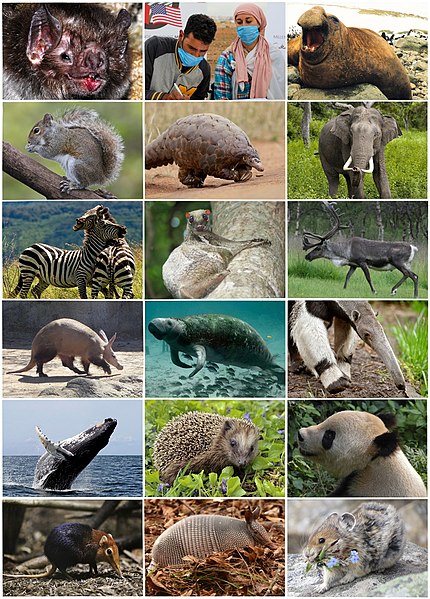Laurasiatheria is a superorder of placental mammals that groups together true insectivores (eulipotyphlans), bats (chiropterans), carnivorans, pangolins (pholidotes), even-toed ungulates (artiodactyls), odd-toed ungulates (perissodactyls), and all their extinct relatives. From systematics and phylogenetic perspectives, it is subdivided into order Eulipotyphla and clade Scrotifera. It is a sister group to Euarchontoglires with which it forms the magnorder Boreoeutheria. Laurasiatheria was discovered on the basis of the similar gene sequences shared by the mammals belonging to it; no anatomical features have yet been found that unite the group, although a few have been suggested such as a small coracoid process, a simplified hindgut and allantoic vessels that are large to moderate in size. The Laurasiatheria clade is based on DNA sequence analyses and retrotransposon presence/absence data. The superorder originated on the northern supercontinent of Laurasia, after it split from Gondwana when Pangaea broke up. Its last common ancestor is supposed to have lived between ca. 76 to 90 million years ago.

Laurasiatheria
Placental mammals are one of the three extant subdivisions of the class Mammalia, the other two being Monotremata and Marsupialia. Placentalia contains the vast majority of extant mammals, which are partly distinguished from monotremes and marsupials in that the fetus is carried in the uterus of its mother to a relatively late stage of development. The name is something of a misnomer considering that marsupials also nourish their fetuses via a placenta, though for a relatively briefer period, giving birth to less developed young which are then nurtured for a period inside the mother's pouch. Placentalia represents the only living group within Eutheria, which contains all mammals more closely related to placentals than to marsupials.
Placentalia


